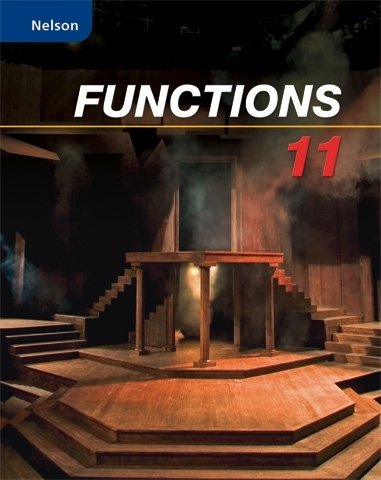
All Solutions
Page 134: Chapter Self-Test
$a-(b-c+d)=a+(-b+c-d)$
$$
begin{align*}
bold{a);;;} &(-x^2+2x+7)+(2x^2-7x-7)\ &= (-x^2+2x^2)+(2x-7x)+(7-7)\
&=x^2-5x\\
bold{b);;;} &(2m^2-mn+4n^2)-(5m^2-n^2)+(7m^2-2mn)\
&= (2m^2-mn+4n^2)+(-5m^2+n^2)+(7m^2-2mn)\
&=(2m^2-5m^2)+(-mn-2mn)+(4n^2+n^2)\
&=-3m^2-3mn+5n^2end{align*}
$$
b) $-3m^2-3mn+5n^2$
,$ is equivalent to
$$
begin{align*}
&
2[12a(3a)+12a(-7)-5(3a)-5(-7)]
\&=
2[36a^2-84a-15a+35]
\&=
2[36a^2-99a+35]
.end{align*}
$$
Using the Distributive Property which is given by $a(b+c)=ab+ac,$ the expression above is equivalent to
$$
begin{align*}
&
2(36a^2)+2(-99a)+2(35)
\&=
72a^2-198a+70
.end{align*}
$$
,$ is equivalent to
$$
begin{align*}
&
2x^2y(4xy^2)+2x^2y(5x^2y)-3xy^2(4xy^2)-3xy^2(5x^2y)
\&=
10x^4y^2+(8x^3y^3-15x^3y^3)-12x^2y^4
\&=
10x^4y^2-7x^3y^3-12x^2y^4
.end{align*}
$$
,$ is equivalent to
$$
begin{align*}
&
[4x(5x)+4x(2)-1(5x)-1(2)](x-3)
\&=
[20x^2+8x-5x-2](x-3)
\&=
[20x^2+3x-2](x-3)
\&=
(20x^2+3x-2)(x-3)
.end{align*}
$$
Using the Distributive Property, the expression above is equivalent to
$$
begin{align*}
&
20x^2(x)+20x^2(-3)+3x(x)+3x(-3)-2(x)-2(-3)
\&=
20x^3-60x^2+3x^2-9x-2x+6
\&=
20x^3+(-60x^2+3x^2)+(-9x-2x)+6
\&=
20x^3-57x^2-11x+6
.end{align*}
$$
,$ the given expression, $(3p^2+p-2)^2
,$ is equivalent to
$$
begin{align*}
&
(3p^2)^2+(p)^2+(-2)^2+2(3p^2)(p)+2(3p^2)(-2)+2(p)(-2)
\&=
9p^4+p^2+4+6p^3-12p^2-4p
\&=
9p^4+6p^3+(p^2-12p^2)-4p+4
\&=
9p^4+6p^3-11p^2-4p+4
.end{align*}
$$
b) $10x^4y^2-7x^3y^3-12x^2y^4$
c) $20x^3-57x^2-11x+6$
d) $9p^4+6p^3-11p^2-4p+4$
$$
begin{align*}
g(x)&=(3x-a)^2
\&=
(3x)^2-2(3x)(a)+(a)^2
\&=
9x^2-(6x)a+a^2
\&ne
9x^2+4
\&=
f(x)
.end{align*}
$$
$h(n+1)-h(n)$
Use the special product $(x+y)^3=x^3+3x^2y+3xy^2+y^3$
$$
begin{align*} h(n)&=(2n+1)^3\&=(2n)^3+3(2n)^2(1)+3(2n)(1^2)+1^3\&=8n^3+12n^2+6n+1\\
h(n+1)&=[2(n+1)+1]^3\&=(2n+2+1)^3\&=(2n+3)^3\&=(2n)^3+3(2n)^2(3)+3(2n)(3^2)+3^3\&=8n^3+36n^2+54n+27end{align*}
$$
Therefore,
$$
begin{align*} h(n+1)-h(n)&=(8n^3+36n^2+54n+27)-(8n^3+12n^2+6n+1\
&=(8n^3+36n^2+54n+27)+(-8n^3-12n^2-6n-1)\
&=(8n^3-8n^3)+(36n^2-12n^2)+(54n-6n)+(27-1)\
&=24n^2+48n+26end{align*}
$$
$$
begin{align*} h(n+1)-h(n)&=24n^2+48n+26\
h(5+1)-h(5)&=24(5^2)+48(5)+26\
&=866end{align*}
$$
Therefore, Clyde feels 866 more pain on day 6 than on day 5.
b) $h(6)-h(5)=866$
,$ is equivalent to
$$
begin{align*}
&
3m(m-1)+2m(-1)(m-1)
\&=
3m(m-1)-2m(m-1)
.end{align*}
$$
Factoring the $GCF=
(m-1)
,$ the expression above is equivalent to
$$
begin{align*}
&
(m-1)(3m-2m)
\&=
(m-1)m
\&=
m(m-1)
.end{align*}
$$
expression
$$
begin{align*}
x^2-27x+72
end{align*}
$$
has $c=
72$ and $b=
-27
.$
The two numbers with a product of $c$ and a sum of $b$ are $left{
-3,-24
right}.$ Using these two numbers, the
expression
above is equivalent to
$$
begin{align*}
(x-3)(x-24)
.end{align*}
$$
$$
begin{align*}
15x^2-7xy-2y^2
end{align*}
$$
has $ac=
15(-2)=-30$ and $b=
-7
.$
The two numbers with a product of $c$ and a sum of $b$ are $left{
-10,3
right}.$ Using these $2$ numbers to decompose the middle term of the trinomial expression above results to
$$
begin{align*}
15x^2-10xy+3xy-2y^2
.end{align*}
$$
Grouping the first and second terms and the third and fourth terms, the given expression is equivalent to
$$
begin{align*}
(15x^2-10xy)+(3xy-2y^2)
.end{align*}
$$
Factoring the $GCF$ in each group results to
$$
begin{align*}
5x(3x-2y)+y(3x-2y)
.end{align*}
$$
Factoring the $GCF=
(3x-2y)$ of the entire expression above results to
$$
begin{align*}
(3x-2y)(5x+y)
.end{align*}
$$
expression,
$(2x-y+1)^2-(x-y-2)^2
,$ is equivalent to
$$
begin{align*}
&
[(2x-y+1)+(x-y-2)][(2x-y+1)-(x-y-2)]
\&=
(2x-y+1+x-y-2)(2x-y+1-x+y+2)
\&=
(3x-2y-1)(x+3)
.end{align*}
$$
,$ is equivalent to
$$
begin{align*}
(5xy-10x)-(3y-6)
.end{align*}
$$
Factoring the $GCF$ in each group results to
$$
begin{align*}
5x(y-2)-3(y-2)
.end{align*}
$$
Factoring the $GCF=
(y-2)$ of the entire expression above results to
$$
begin{align*}
(y-2)(5x-3)
.end{align*}
$$
,$ is equivalent to
$$
begin{align*}
p^2-(m^2-6m+9)
.end{align*}
$$
Since the last three terms form a perfect square trinomial, the expression above is equivalent to
$$
begin{align*}
p^2-(m-3)^2
.end{align*}
$$
Using the factoring of the difference of $2$ squares which is given by $a^2-b^2=(a+b)(a-b),$ the expression above is equivalent to
$$
begin{align*}
&
[p+(m-3)][p-(m-3)]
\&=
(p+m-3)(p-m+3)
.end{align*}
$$
b) $(x-3)(x-24)$
c) $(3x-2y)(5x+y)$
d) $(3x-2y-1)(x+3)$
e) $(y-2)(5x-3)$
f) $(p+m-3)(p-m+3)$
,$ is equivalent to
$$
begin{align*}
y=(x^3-4x^2)-(x-4)
.end{align*}
$$
Factoring the $GCF,$ the equation above is equivalent to
$$
begin{align*}
y&=x^2(x-4)-(x-4)
\
y&=(x-4)(x^2-1)
.end{align*}
$$
Using the factoring of the difference of $2$ squares which is given by $a^2-b^2=(a+b)(a-b),$ the equation above is equivalent to
$$
begin{align*}
y&=(x-4)(x+1)(x-1)
.end{align*}
$$
Since the $x$-intercept is the value of $x$ when $y$ is zero, then
$$
begin{align*}
0&=(x-4)(x+1)(x-1)
.end{align*}
$$
Equating each factor to zero (Zero Product Property) and then solving for $x,$ then the $x$-intercepts are ${ -1,1,4 }
.$
,$ is equivalent to
$$
begin{align*}
&
dfrac{4a^2b}
{5ab^3}cdotdfrac{35ab}{6a^2b}
.end{align*}
$$
Cancelling the common factors between the numerator and the denominator, the expression above is equivalent to
$$
begin{align*}
&
dfrac{cancel{2}cdot2cancel{a^2b}}
{cancel{5}cancel{a}cancel{b}(b^2)}cdotdfrac{cancel{5}(7)cancel{a}cancel{b}}{cancel{2}cdot3cancel{a^2b}}
\&=
dfrac{14}{3b^2}
.end{align*}
$$
Since the denominator cannot be equal to zero, then the simplified form and the restrictions of the given expression are $dfrac{14}{3b^2}
text{, }ane0text{, }bne0
.$
,$ is
$$
begin{align*}
&
dfrac{x-2}{(x-4)(x+3)}timesdfrac{2(x-4)}{(x-2)(x-2)}
.end{align*}
$$
Cancelling the common factors between the numerator and the denominator, the expression above is equivalent to
$$
begin{align*}
&
dfrac{cancel{x-2}}{(cancel{x-4})(x+3)}timesdfrac{2(cancel{x-4})}{(cancel{x-2})(x-2)}
\&=
dfrac{2}{(x+3)(x-2)}
.end{align*}
$$
Since the denominator cannot be equal to zero, then the simplified form and the restrictions of the given expression are $dfrac{2}{(x+3)(x-2)}
text{, }xne{ -3,2,4 }
.$
,$ is
$$
begin{align*}
&
dfrac{5}{(t-9)(t+2)}+dfrac{6}{t+2}
.end{align*}
$$
Multiplying the fractions by an expression equal to $1$ which will make the denominators equal to the $LCD=
(t-9)(t+2)
,$ the expression above is equivalent to
$$
begin{align*}
&
dfrac{5}{(t-9)(t+2)}+dfrac{6}{t+2}cdotdfrac{t-9}{t-9}
\&=
dfrac{5}{(t-9)(t+2)}+dfrac{6t-54}{(t-9)(t+2)}
.end{align*}
$$
Operating on the numerators and copying the common denominator,
the expression above is equivalent to
$$
begin{align*}
&
dfrac{5+6t-54}{(t-9)(t+2)}
\\&=
dfrac{6t-49}{(t-9)(t+2)}
.end{align*}
$$
Since the denominator cannot be equal to zero, then the simplified form and the restrictions of the given expression are $dfrac{6t-49}{(t-9)(t+2)}
text{, }tne{ -2,9 }
.$
,$ is
$$
begin{align*}
&
dfrac{4x}{(3x+2)(2x+3)}-dfrac{3x}{(2x+3)(2x-3)}
.end{align*}
$$
Multiplying the fractions by an expression equal to $1$ which will make the denominators equal to the $LCD=
(3x+2)(2x+3)(2x-3)
,$ the expression above is equivalent to
$$
begin{align*}
&
dfrac{4x}{(3x+2)(2x+3)}cdotdfrac{2x-3}{2x-3}-dfrac{3x}{(2x+3)(2x-3)}cdotdfrac{3x+2}{3x+2}
\&=
dfrac{8x^2-12x}{(3x+2)(2x+3)(2x-3)}-dfrac{9x^2+6x}{(3x+2)(2x+3)(2x-3)}
.end{align*}
$$
Operating on the numerators and copying the common denominator,
the expression above is equivalent to
$$
begin{align*}
&
dfrac{8x^2-12x-9x^2-6x}{(3x+2)(2x+3)(2x-3)}
\\&=
dfrac{-x^2-18x}{(3x+2)(2x+3)(2x-3)}
\\&=
dfrac{-x(x+18)}{(3x+2)(2x+3)(2x-3)}
.end{align*}
$$
Since the denominator cannot be equal to zero, then the simplified form and the restrictions of the given expression are $dfrac{-x(x+18)}{(3x+2)(2x+3)(2x-3)}
text{, }xneleft{ -dfrac{3}{2},-dfrac{2}{3},dfrac{3}{2} right}
.$
text{, }ane0text{, }bne0$
b) $dfrac{2}{(x+3)(x-2)}
text{, }xne{ -3,2,4 }$
c) $dfrac{6t-49}{(t-9)(t+2)}
text{, }tne{ -2,9 }$
d) $dfrac{-x(x+18)}{(3x+2)(2x+3)(2x-3)}
text{, }xneleft{ -dfrac{3}{2},-dfrac{2}{3},dfrac{3}{2} right}$
$$
begin{align*}
&
dfrac{1}{a}+dfrac{1}{a+1}+dfrac{1}{a+2}
\\&=
dfrac{(a+1)(a+2)+a(a+2)+a(a+1)}{a(a+1)(a+2)}
\\&=
dfrac{(a^2+3a+2)+(a^2+2a)+(a^2+a)}{a(a+1)(a+2)}
\\&=
dfrac{3a^2+6a+2}{a(a+1)(a+2)}
text{ (Expression $1$)}
.end{align*}
$$
Three times the product of the first and third denominators, plus $2$ results to the expression
$$
begin{align*}
&
3(a)(a+2)+2
\&=
3a^2+6a+2
text{ (Expression $2$)}
.end{align*}
$$
Since the numerator of Expression $1$ is the same as Expression $2,$ and the denominator of the sum is the product of the three denominators, then Roman’s conjecture is true.

